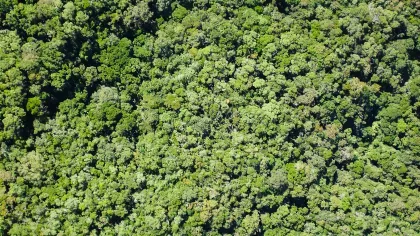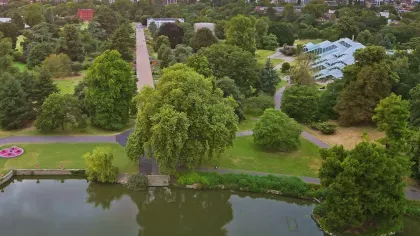28 November 2024
4 min read
A rude awakening: the risks of climate change for sleeping seeds
What happens when seed dormancy meets climate change – and why it matters for our forests.

Forests are finely tuned to the rhythms of climate. We see these rhythms every year, as leaves fall in autumn and newly formed buds open in spring. Flowers bloom, and seeds are set on a seasonal schedule that forests have followed for thousands of years.
Climate change is disrupting this delicate balance at an unmatched pace. Understanding how changing conditions affect trees and their seeds is essential to supporting forest resilience in the future.

How do warming winters affect seeds?
For many UK tree species, seeds rely on a steady winter chill, or ‘chilling period’, to prepare for germination in the spring. The seeds wait until conditions are just right for germination and growth, through a process called ‘dormancy’.
Seed dormancy ensures that seeds do not germinate even when environmental conditions like water availability, light and temperature might seem right. Instead, the seed waits until those conditions are reliably good for growth, preventing seeds from sprouting in winter or during short warm spells where the long-term conditions would be too harsh for a seedling to survive.
However, with climate change causing winter temperatures to warm or become more unpredictable, seeds may no longer receive the consistent chilling period they need. When this happens, seeds might germinate at the wrong time or not at all, making it harder for seedlings to survive and forests to regenerate naturally.

How are UK trees affected?
In the UK, seeds of some species like black alder (Alnus glutinosa), silver birch (Betula pendula), and downy birch (Betula pubescens) can begin germination under limited conditions but they require a chilling period to reach their full germination potential.
As winters get warmer, these chilling requirements may not be met in regions like southern England and Wales. For birch trees, this disruption can be especially severe: seeds may germinate too early, which puts young seedlings at risk from frost, or germinate too late, meaning they won’t have time to establish themselves before dry spells, or sometimes fail to germinate entirely.

Predicting the future
Here at Kew, we’re using our Millennium Seed Bank collections to study how climate change may affect UK trees. We used seeds collected across the UK from black alder (Alnus glutinosa), downy birch (Betula pubescens), and Scots pine (Pinus sylvestris). These trees come from a range of climates, from the cooler north to the (relatively) milder south.
We test how well the seeds germinated under different environmental conditions by sowing them at different temperatures. Some seeds are kept in the cold for a few weeks to mimic winter, while others are left without chilling to see what effect the lack of a chilling period might have.
All this data can then be used to model how changing temperatures might affect germination, and work out which tree populations are most at risk. This helps us target conservation and restoration efforts where they’re most needed, and to plan for climate-resilient forests of the future.

Can we break dormancy?
Many tree seeds also need to experience a specific sequence of temperatures to break dormancy and germinate successfully. For example, seeds from species like holly (Ilex acquifolium), juniper (Juniperus communis), and hawthorn (Crataegus monogyna) need one or more cycles of warmth followed by cold before they can germinate, which may take several months to a few years.
Even with long or repeated cycles, success is often still limited. We’re trying to figure out better ways to wake these seeds up from their deep dormant state by keeping them in different conditions and counting what proportion of seeds successfully germinate.
We start off relatively simply by placing seeds in warm then cold temperatures, to simulate the seasons. We then try to improve the process by changing the temperatures and humidity levels, aiming to find the set of conditions which will break dormancy faster and lead to the germination of more seeds.

Understanding how to break seed dormancy will help us to grow seedlings more quickly and efficiently in nurseries, both for forestry and for conservation. As climate change disrupts the natural regeneration rhythms of tree seeds, understanding exactly how these mechanisms work will help us protect and adapt forests for the future.











